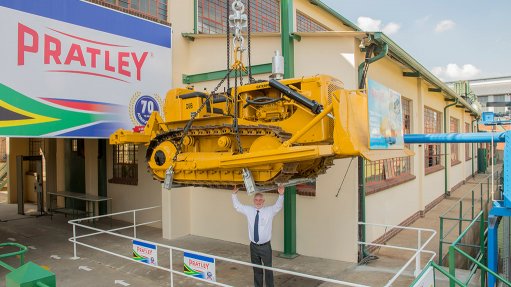
KIM PRATLEY Our laboratory provides the synergies of the business
Full control over raw-material sources, production and packaging, as well as the in-house expertise that this stimulates, enables the Pratley group of companies to develop innovative products, ensure quality control and grow, says Pratley CEO Kim Pratley.
The company, which produces a well-known range of do-it-yourself consumer adhesives and products, as well as high-performance adhesives and electrical cable termination products for industrial applications, turned 70 this year and is set to launch new products for consumer and industrial use within the next few months, he says.
Pratley’s research and development division enables it to develop new products and manu- facture to exacting performance standards. Its in-house expertise and capabilities are key differentiators and underpin its ability to serve industrial sectors with suitable services and products, such as for the mining and manufacturing industries.
“For example, we use the same polymer science expertise from our adhesives work to develop and produce flameproof electrical cable glands, on which people’s lives depend.”
The need to meet performance and service commitments, and control the security of the company’s production are driving the in-house focus of Pratley, he adds.
“Our laboratory provides the synergies of the business. Ultraviolet-resistant rubber cable shrouds, durable flameproof cable glands and our range of epoxies and adhesives are developed because of the cross-pollination of disciplines in the lab that helps us to produce innovative products.”
The Pratley Analytical business division was established because of the company’s in-house testing needs. The division grew with many mining clients requesting sample testing services. It continues to serve the industry.
Meanwhile, the company also develops mineral products from the raw materials it processes at its Chamdor facility, in Johannesburg, specifically perlite and the zeolite called clinoptilolite.
The perlite, a form of volcanic glass, is used to produce lightweight concrete screeds, thermal insulating plasters, cryogenic tank insulation, metal slag coagulants and horticultural growing mediums.
Pratley crushes it to sugar-grain size and places it in a furnace. The water inside the grains expands, producing millions of spherical microbeads with useful thermal insulating and fireproofing properties.
The zeolite can also be used as a molecular sieve, with openings in the structure 5 angstrom in diameter, which enables it to scrub certain gases, such as carbon dioxide, from a gas feed.
Clinoptilolite, which has a negatively charged microstructure, has pollution-control properties and has been used to clean up the Chernobyl, Three-Mile Island and Fuku-shima nuclear disasters.
“A commercial use for clinoptilolite is as a pool-filtration medium that removes excess ammonia from water, reducing the formation of harmful chloramines and the use of chlorine.”
The company has also worked on using clinoptilolite to design a catalyst to produce liquid hydrocarbon fuel from natural gas through a steam reformation processes.
“We will launch two new products in the next few months and are developing more new products. We are also pushing to grow our exports and increase the number of countries to which we export,” concludes Pratley.